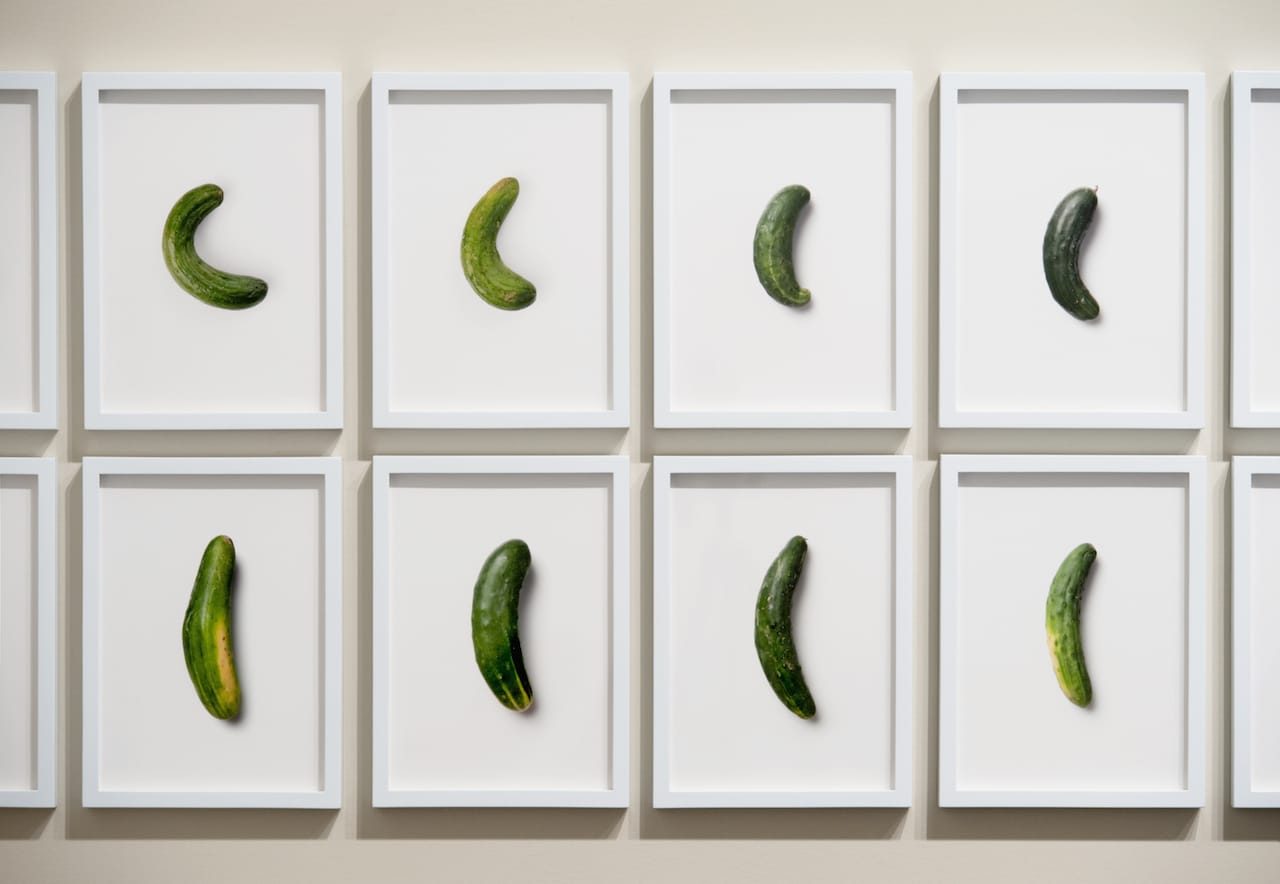
New Classification Rules: When a Cucumber Is Not a Cucumber
Historically, migration patterns have been a function of issues of global importance, such as poverty and prosperity, economic development, and human rights. Today more than ever, war and natural disasters, or the simple desire for better living conditions, continue to fuel new streams of people, things, and animals. Governments will obsessively institute more and more rules to regulate these flows, prompting desires for new notions of citizenship in turn. In the CCA research project “Journeys: How traveling fruit, ideas and buildings rearrange our environment,” we looked closely at this larger phenomenon of global movement, telling unexpected narratives of the hybrid territories of today and how regulations affect the built environment at all scales.
Cucumbers grown organically can develop a wide range of forms and curvatures. In 1988, the European Economic Community adopted a law that included new regulations for fruit and vegetables sold directly to consumers. The law established a mathematical definition for the acceptable curvature in the highest class of cucumber as way of standardizing the contents of shipping crates. An unintended consequence was that, for the purposes of retail, some cucumbers ceased to be cucumbers. The law was superseded in 2009, and the new legislation allows for many nonstandard fruits and vegetables to be sold directly to consumers. The variety of what we grow and eat is shaped by the power of abstract classification, ultimately affecting the landscape and its biodiversity.
Giovanna Borasi
Giovanna Borasi is an architect, curator and writer, and Chief Curator at the Canadian Centre for Architecture (CCA) since 2014. She was editor for Abitare (Deputy Editor in Chief, 2011-2013), Lotus International (1998-2005) and Lotus Navigator (2000-2004). In 2005 she was named Curator, Contemporary Architecture at the CCA. Her research focuses on contemporary discussion in architecture with particular attention to alternative ways of practicing and evaluating architecture and how environmental, political and social issues influence today’s urbanism and built environment.